What function does the shape of the star nosed mole ideas
Home » Background » What function does the shape of the star nosed mole ideasYour What function does the shape of the star nosed mole images are available in this site. What function does the shape of the star nosed mole are a topic that is being searched for and liked by netizens now. You can Download the What function does the shape of the star nosed mole files here. Find and Download all royalty-free vectors.
If you’re looking for what function does the shape of the star nosed mole images information related to the what function does the shape of the star nosed mole interest, you have visit the right site. Our website frequently provides you with hints for seeking the highest quality video and image content, please kindly search and locate more enlightening video articles and graphics that match your interests.
What Function Does The Shape Of The Star Nosed Mole. Each of its 22 tentacles are covered by 25000 sensory receptors Eimer Organs which help it to identify and kill its prey with a minimum time of 120 milliseconds giving it the title of the. The existence of a tactile fovea in the star-nosed mole can be compared with the well-known retinal fovea in other mammals and also with the acoustic fovea of bats. Photograph by Kenneth Catania Catania has discovered that a. This allows for an extremely fast transfer of information to the animals brain.
 Body And Brain Scaled Size Comparisons Among Select Species Profiles Download Scientific Diagram From researchgate.net
Body And Brain Scaled Size Comparisons Among Select Species Profiles Download Scientific Diagram From researchgate.net
Also called Condylura Cristata the star nosed mole is a unique North American mammal that gets its name from the shape of its nose. Cristata Marasco and Catania 2007. The nose of a Star-nosed mole is its most fascinating feature. It helps the mole eliminate excess heat This nose will help the mole to do its. The function that the shape of the star-nosed moles nose serve is. It helps the mole eliminate excess heat.
Unlike most other species of mole the Star Nosed variety has an entire extra cortex in their brain devoted to touch.
The remarkably sensitive tactile organ that gives the star-nosed mole its name is thought to help the animal forage for small prey. Unlike most other species of mole the Star Nosed variety has an entire extra cortex in their brain devoted to touch. This seems to indicate that the mole might be getting a star-shaped view of the world as it processes all that touch data at almost the maximum speed that a nervous system can support. This allows for an extremely fast transfer of information to the animals brain. Photograph by Kenneth Catania Catania has discovered that a. They are among the only living species in the Condylura family.
 Source: nationalgeographic.com
Source: nationalgeographic.com
Star-nosed moles provide many interesting new insights into the organization function and evolution of somatosensory systems and corresponding brain areas. Eliminate waste avoid predators. It helps the mole breathe under water. Each of its 22 tentacles are covered by 25000 sensory receptors Eimer Organs which help it to identify and kill its prey with a minimum time of 120 milliseconds giving it the title of the. The highly specialized rostrum of the star nosed mole is covered in these papillae making this skin surface a star-shaped sheet of discrete somatosensory organs.
 Source: researchgate.net
Source: researchgate.net
It helps the mole find food. At the center of their starry nose is an area called the touch fovea. The function that the shape of the star-nosed moles nose serve is. Each of its 22 tentacles are covered by 25000 sensory receptors Eimer Organs which help it to identify and kill its prey with a minimum time of 120 milliseconds giving it the title of the. The nose has twenty-two appendages that form a star shape at the nose National Geographic 2010.
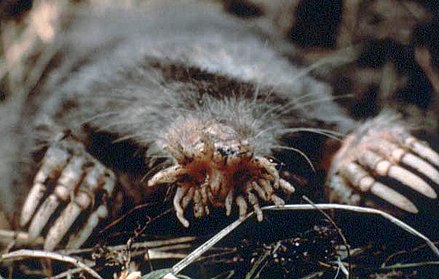 Source: wikiwand.com
Source: wikiwand.com
Luckily for us humans the mole is only 76 inches 19 cm long and weighs about 18 ounces 51 grams. At the center of their starry nose is an area called the touch fovea. The function that the shape of the star-nosed moles nose serve is. Star-nosed moles have extremely efficient nervous systems that convey information from the environment to their brains at speeds approaching. But the Star Nosed moles most important feature is its sense of touch.
 Source: nationalgeographic.com
Source: nationalgeographic.com
It helps the mole eliminate excess heat. Luckily for us humans the mole is only 76 inches 19 cm long and weighs about 18 ounces 51 grams. Also called Condylura Cristata the star nosed mole is a unique North American mammal that gets its name from the shape of its nose. Star-nosed moles have extremely efficient nervous systems that convey information from the environment to their brains at speeds approaching. These tendrils can fold in to cover up the nostrils of the nose keeping dirt out when the animal is underground and.
 Source: pinterest.com
Source: pinterest.com
The Star-Nosed Mole is mainly known for its unique feature its star-like nose. Allows the mole to find food How would a prehensile tail help a tree-dwelling chameleon. Each of these appendages is covered with thousands of receptors called Eimers organs that act as feelers for C. This seems to indicate that the mole might be getting a star-shaped view of the world as it processes all that touch data at almost the maximum speed that a nervous system can support. The highly specialized rostrum of the star nosed mole is covered in these papillae making this skin surface a star-shaped sheet of discrete somatosensory organs.
 Source: pngaaa.com
Source: pngaaa.com
Star-nosed moles provide many interesting new insights into the organization function and evolution of somatosensory systems and corresponding brain areas. Star-nosed moles provide many interesting new insights into the organization function and evolution of somatosensory systems and corresponding brain areas. Which of the following do all animals not need to do in order to survive capture prey. Externally each EO of a star-nosed mole appears as a raised papilla with a dimple in the center Fig 1D E. With little use for eyesight its tentacled nose is its sense organ to locate prey.
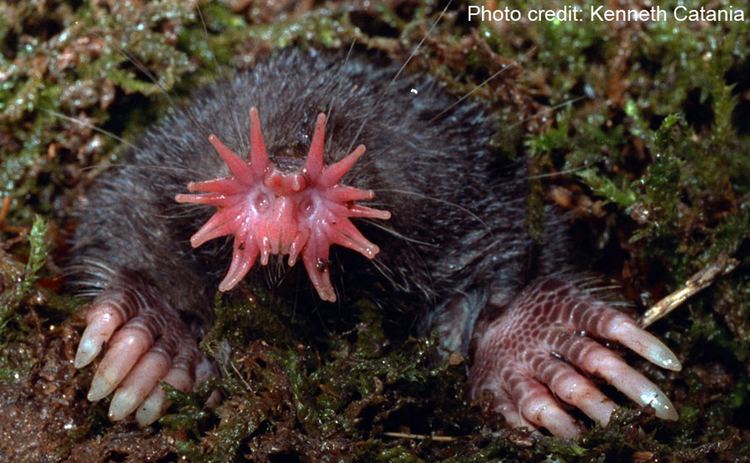 Source: alchetron.com
Source: alchetron.com
The existence of a tactile fovea in the star-nosed mole can be compared with the well-known retinal fovea in other mammals and also with the acoustic fovea of bats. Luckily for us humans the mole is only 76 inches 19 cm long and weighs about 18 ounces 51 grams. Which of the following do all animals not need to do in order to survive capture prey. It helps the mole eliminate excess heat This nose will help the mole to do its. What function does the shape of the starnosed moles nose serve.
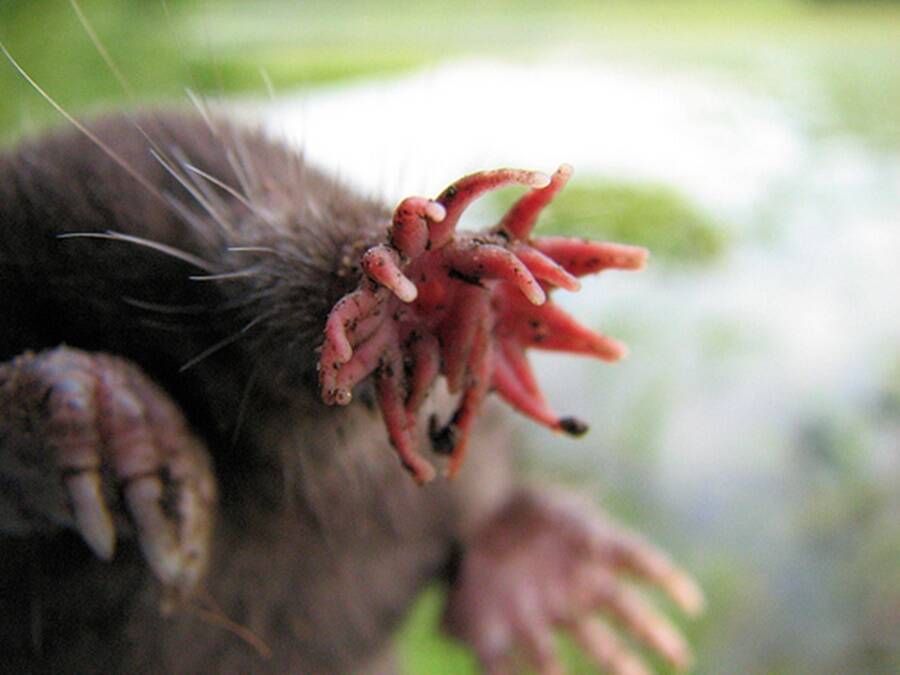 Source: allthatsinteresting.com
Source: allthatsinteresting.com
It helps the mole dig out its burrow. Allows the mole to find food How would a prehensile tail help a tree-dwelling chameleon. Star-nosed moles provide many interesting new insights into the organization function and evolution of somatosensory systems and corresponding brain areas. Luckily for us humans the mole is only 76 inches 19 cm long and weighs about 18 ounces 51 grams. Each of these appendages is covered with thousands of receptors called Eimers organs that act as feelers for C.
 Source: pinterest.com
Source: pinterest.com
What function does the shape of the starnosed moles nose serve. This moles adaptation covers up its disadvantage of almost being blind. Star-nosed moles provide many interesting new insights into the organization function and evolution of somatosensory systems and corresponding brain areas. What function does the shape of the starnosed moles nose serve. This allows for an extremely fast transfer of information to the animals brain.
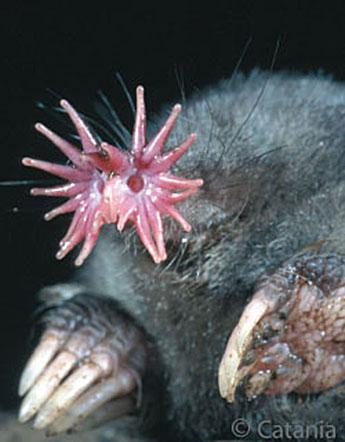 Source: wnpr.org
Source: wnpr.org
Star-nosed moles have extremely efficient nervous systems that convey information from the environment to their brains at speeds approaching. But the Star Nosed moles most important feature is its sense of touch. It helps the mole dig out its burrow. Which of the following do all animals not need to do in order to survive capture prey. These tendrils can fold in to cover up the nostrils of the nose keeping dirt out when the animal is underground and.
 Source: slideplayer.com
Source: slideplayer.com
Externally each EO of a star-nosed mole appears as a raised papilla with a dimple in the center Fig 1D E. It helps the mole breathe under water. This seems to indicate that the mole might be getting a star-shaped view of the world as it processes all that touch data at almost the maximum speed that a nervous system can support. With little use for eyesight its tentacled nose is its sense organ to locate prey. They are among the only living species in the Condylura family.
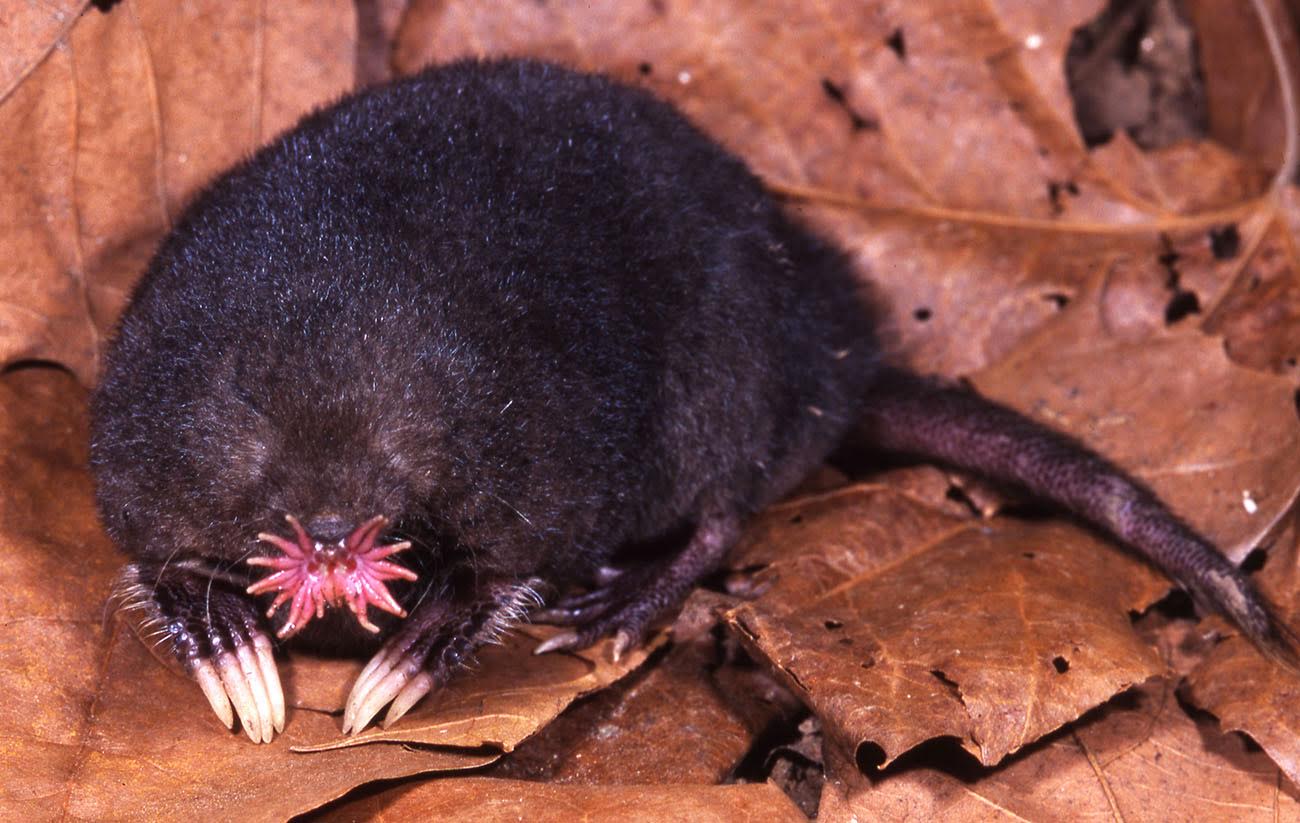 Source: sciencefriday.com
Source: sciencefriday.com
They are among the only living species in the Condylura family. They are among the only living species in the Condylura family. This seems to indicate that the mole might be getting a star-shaped view of the world as it processes all that touch data at almost the maximum speed that a nervous system can support. But the Star Nosed moles most important feature is its sense of touch. Luckily for us humans the mole is only 76 inches 19 cm long and weighs about 18 ounces 51 grams.
 Source: vectorstock.com
Source: vectorstock.com
The function that the shape of the star-nosed moles nose serve is. The function that the shape of the star-nosed moles nose serve is. Each of these appendages is covered with thousands of receptors called Eimers organs that act as feelers for C. At the center of their starry nose is an area called the touch fovea. The existence of a tactile fovea in the star-nosed mole can be compared with the well-known retinal fovea in other mammals and also with the acoustic fovea of bats.
 Source: insh.world
Source: insh.world
The star shaped nose is completely hairless with 22 tentacle-like appendages that are used to search out food. The existence of a tactile fovea in the star-nosed mole can be compared with the well-known retinal fovea in other mammals and also with the acoustic fovea of bats. With little use for eyesight its tentacled nose is its sense organ to locate prey. Photograph by Kenneth Catania Catania has discovered that a. The nose has twenty-two appendages that form a star shape at the nose National Geographic 2010.
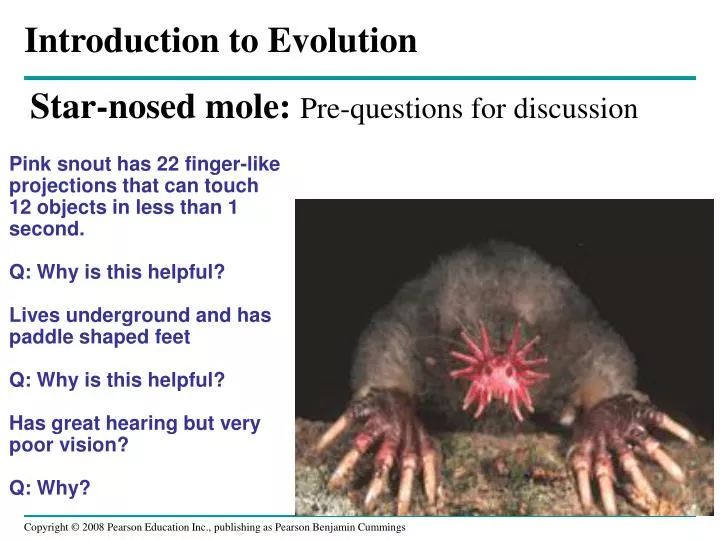 Source: slideserve.com
Source: slideserve.com
What does the shape of the star-nosed moles nose allow the mole to do. Star-nosed moles provide many interesting new insights into the organization function and evolution of somatosensory systems and corresponding brain areas. Star-nosed moles have extremely efficient nervous systems that convey information from the environment to their brains at speeds approaching. Despite being apparently blind these moles have a star-shaped nose that actually helps them to sense things. Each of these appendages is covered with thousands of receptors called Eimers organs that act as feelers for C.

Picture of Star Nosed Mole. Star-nosed moles provide many interesting new insights into the organization function and evolution of somatosensory systems and corresponding brain areas. The nose has twenty-two appendages that form a star shape at the nose National Geographic 2010. Externally each EO of a star-nosed mole appears as a raised papilla with a dimple in the center Fig 1D E. The star shaped nose is completely hairless with 22 tentacle-like appendages that are used to search out food.

These tendrils can fold in to cover up the nostrils of the nose keeping dirt out when the animal is underground and. It helps the mole breathe under water. Picture of Star Nosed Mole. Did we mention Condylura cristata is semi-aquatic. What function does the shape of the starnosed moles nose serve.
 Source: researchgate.net
Source: researchgate.net
The highly specialized rostrum of the star nosed mole is covered in these papillae making this skin surface a star-shaped sheet of discrete somatosensory organs. With little use for eyesight its tentacled nose is its sense organ to locate prey. Despite being apparently blind these moles have a star-shaped nose that actually helps them to sense things. This moles adaptation covers up its disadvantage of almost being blind. It helps the mole eliminate excess heat.
This site is an open community for users to do submittion their favorite wallpapers on the internet, all images or pictures in this website are for personal wallpaper use only, it is stricly prohibited to use this wallpaper for commercial purposes, if you are the author and find this image is shared without your permission, please kindly raise a DMCA report to Us.
If you find this site beneficial, please support us by sharing this posts to your favorite social media accounts like Facebook, Instagram and so on or you can also save this blog page with the title what function does the shape of the star nosed mole by using Ctrl + D for devices a laptop with a Windows operating system or Command + D for laptops with an Apple operating system. If you use a smartphone, you can also use the drawer menu of the browser you are using. Whether it’s a Windows, Mac, iOS or Android operating system, you will still be able to bookmark this website.